Combat winter depression with three proven at-home solutions. First, use light therapy for 30-60 minutes each morning with a white-spectrum light box positioned above your head – aim for 2,000 to 10,000 lux of exposure. Second, maximize natural sunlight by spending 30-60 minutes outside within the first hour of waking and keeping your curtains fully open during daylight hours. Third, transform your morning routine by establishing a consistent wake time and incorporating mood-boosting activities like gentle stretching or gratitude journaling. These science-backed strategies can help lift your spirits, and there's even more you can do to brighten your winter days.
Light Therapy Basics at Home
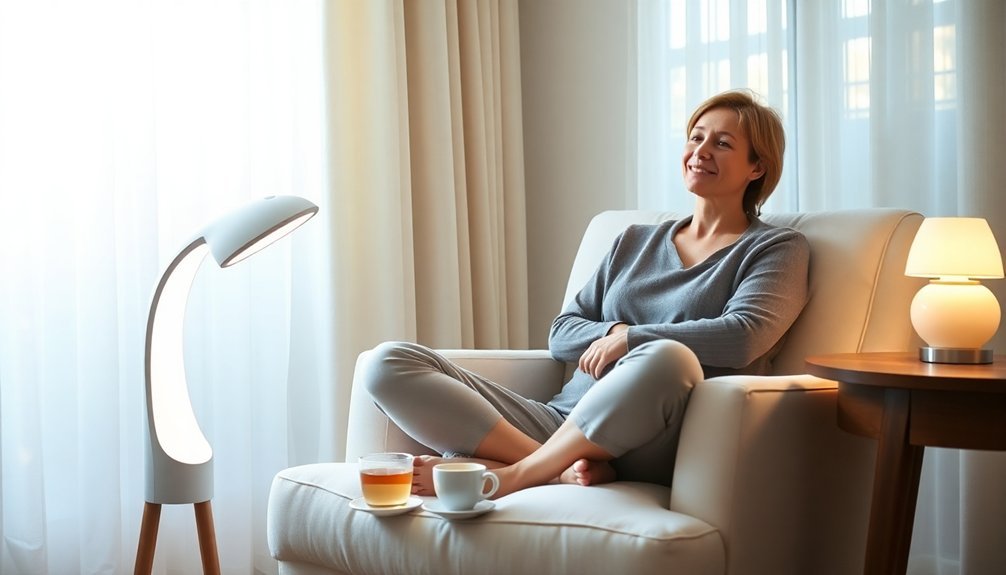
To maximize effectiveness, maintain a consistent sleep schedule and continue treatments throughout the winter months. Select a light box that provides 10,000 lux output for optimal therapeutic benefits.
If you're not seeing results, you can gradually increase your exposure time. Remember to avoid sessions close to bedtime, as they may disrupt your sleep patterns.
Before starting light therapy, consult your doctor, especially if you have eye problems, skin sensitivities, or bipolar disorder.
Choose your device from reputable manufacturers since light boxes aren't regulated by authorities.
Maximize Natural Sunlight Benefits
During winter months, natural sunlight becomes your most powerful ally against seasonal depression. Research shows that spending 30-60 minutes in morning sunlight can dramatically improve your symptoms, with outdoor light therapy leading to a 50% remission rate.
Early morning exposure helps align your body's internal clock while boosting serotonin levels, which regulate your mood and overall well-being. Sunlight triggers special areas in your retina that promote the release of mood-enhancing hormones throughout the day.
To maximize sunlight's benefits, you'll want to optimize both your outdoor exposure and indoor environment. Take a morning walk outside when possible, and transform your living space into a sun-friendly sanctuary.
Open your curtains fully during daylight hours, rearrange furniture to create clear paths for natural light, and strategically place mirrors to amplify available sunlight.
For the best results, follow these daily sunlight-maximizing practices:
- Position your workspace or breakfast area near a window, allowing for natural light exposure during your morning routine
- Remove heavy window coverings and replace them with sheer curtains that let light filter through
- Step outside within the first hour of waking, even on cloudy days, to help regulate your circadian rhythm
Morning Routine Transformation
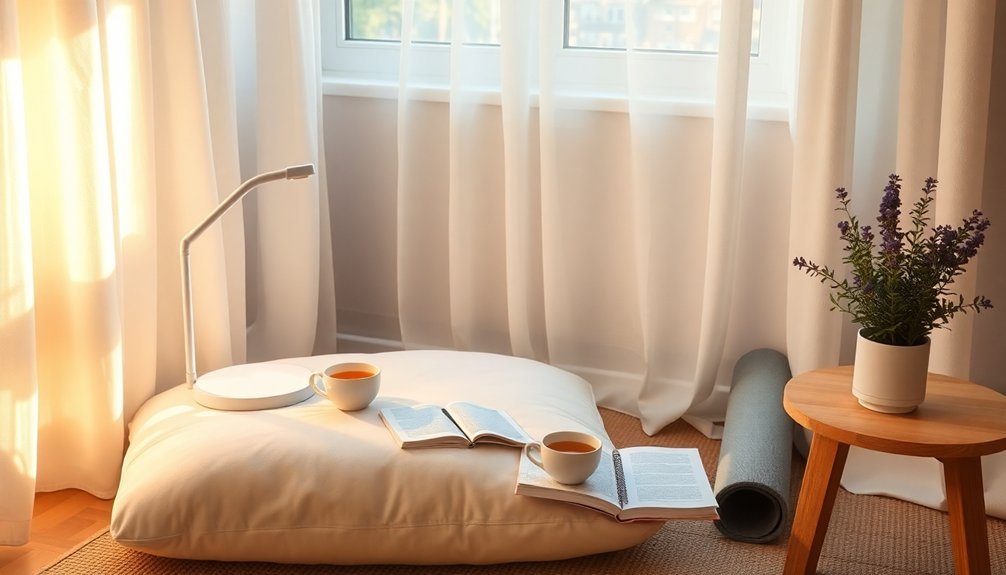
Winter's grip on your mental health can be loosened with a well-crafted morning routine. Start by establishing a consistent wake time, even on weekends, and use natural or simulated light to ease into consciousness. Within your first hour of waking, expose yourself to bright light through a SAD therapy lamp for 15-30 minutes while engaging in gentle movement. Incorporating nutrient-dense breakfast foods helps maintain stable energy levels throughout the day.
Transform your mornings with these evidence-based strategies that combat winter depression:
| Time | Activity | Benefit |
|---|---|---|
| First 5 min | Open curtains/blinds | Natural light exposure |
| Next 15 min | Light therapy session | Regulates circadian rhythm |
| Following 10 min | Gentle stretching/yoga | Increases blood flow |
| Next 15 min | Gratitude journaling | Improves mood |
| Final 15 min | Mindful planning | Reduces anxiety |
Don't overwhelm yourself with an elaborate routine. Instead, focus on manageable micro-habits that you'll actually maintain. Include mood-boosting activities like brief exercise sessions, positive affirmations, or meditation. Create a cozy environment with soft lighting and calming music while you complete your morning tasks. Remember, consistency matters more than perfection when establishing these new habits.
Frequently Asked Questions
Can Light Therapy Worsen Eye Conditions or Interact With Certain Medications?
Yes, light therapy can worsen your existing eye conditions and interact with medications, especially photosensitizing drugs. You'll need to consult your doctor and potentially stop certain medications before starting light therapy treatment.
How Do Different Colors of Light Affect Seasonal Depression Symptoms?
Green light therapy shows better results than red light for treating your seasonal depression symptoms. It's proven more effective at similar intensities, while bright white light remains a standard treatment with proven benefits.
What Alternatives Exist for Night Shift Workers Who Can't Follow Morning Routines?
You can adjust your "morning" routines to when you wake up, use light therapy before shifts, maintain consistent sleep schedules, and create personalized rituals that match your night work schedule.
Does Light Therapy Through Windows or Screens Provide the Same Benefits?
You won't get the same benefits through windows or screens. While natural light helps, windows filter intensity, and screens lack sufficient brightness. You'll need a dedicated light therapy box for effective treatment.
Can Using Light Therapy at Different Times Cause Sleep Disruptions?
Yes, if you don't time your light therapy correctly, you can disrupt your sleep. Morning sessions help you sleep earlier, while evening exposure delays sleep. It's essential to stick to consistent timing.
In Summary
You've got powerful tools to fight winter depression right at home. By combining light therapy, strategic natural light exposure, and an energizing morning routine, you'll create a strong defense against seasonal mood changes. Start small by implementing one strategy at a time, and you'll likely notice improvements within a few weeks. Remember, consistency is key – stick with these methods to maintain better mental health throughout winter.
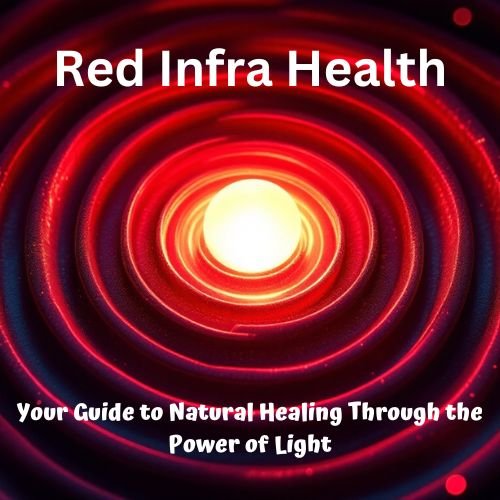


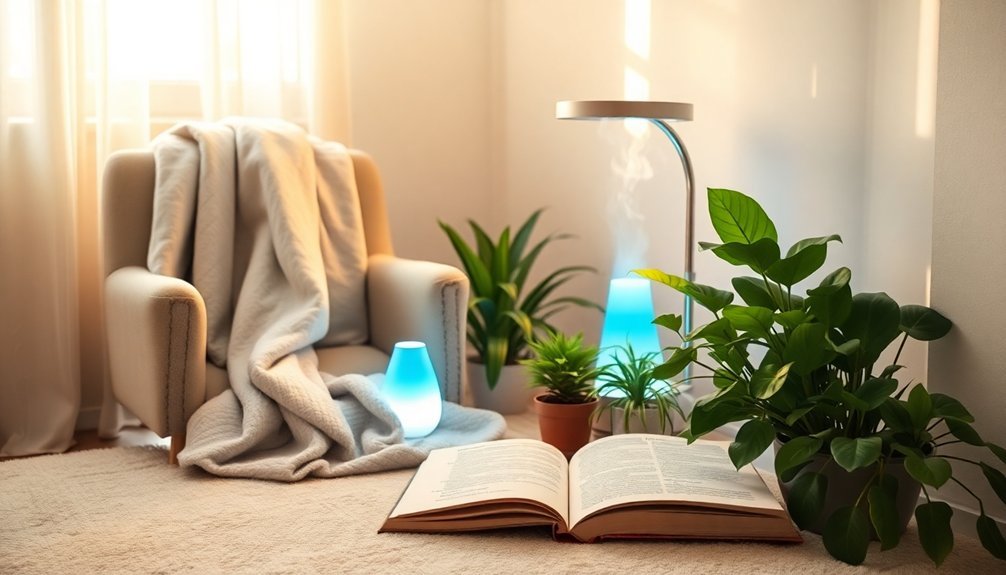
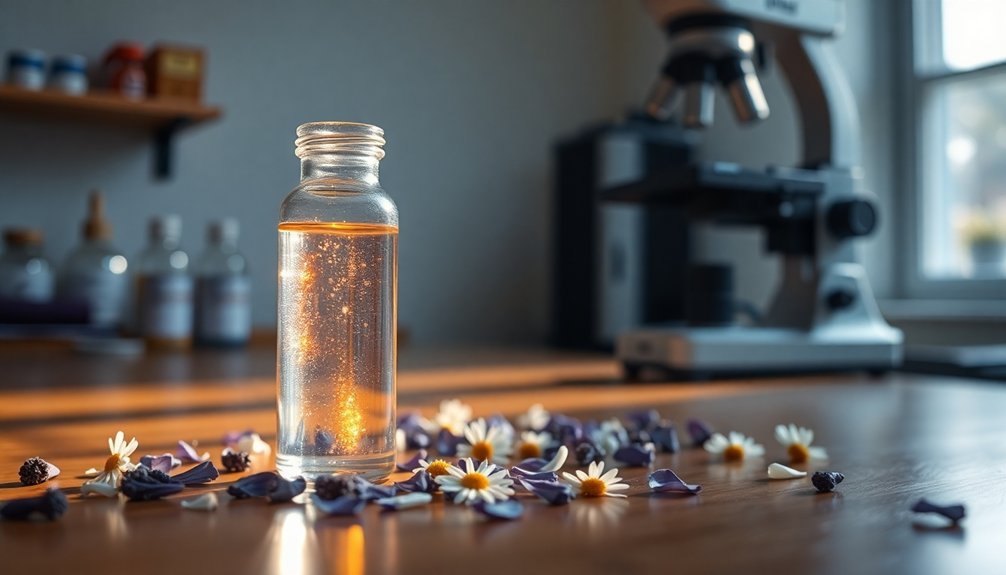
Leave a Reply